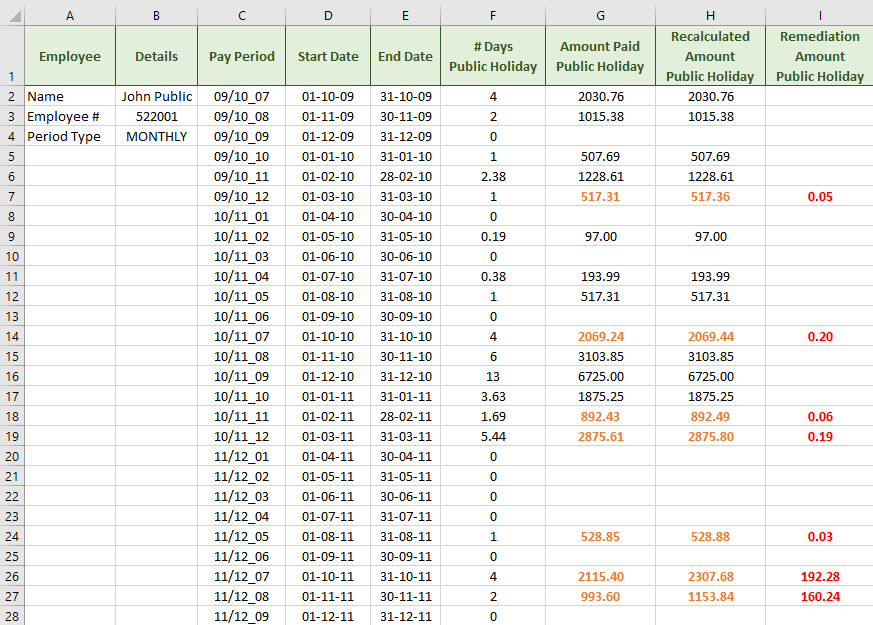IDIOM Remediation
IDIOM has been offering remediation services for 15 years, backed by IDIOM Decision Manager’s outstanding ability to quickly calculate/recalculate complex commercial commitments. Examples of complex commercial commitments include a wide range of financial and related calculations:
- Fees and charges, including interest and penalties
- Social entitlements, including welfare payments
- Wealth and savings entitlements, including interest payments, fund calculations, pension payments, and defined benefit scheme obligations
- Claim payments
- Payroll and employee entitlements, including base pay, additional payments, holiday and other accruals and payments
- Indirect payments such as promised loyalty rewards or similar benefits
- Any payments similar to or related to the above
The need for recalculation and remediation tends to be driven by three major causes:
- Systemic error (the system calculates incorrectly)
- Regulatory change (that pre-dates the system changes required to accommodate it)
- Transaction error (e.g. bad input data)
It is common for remediation for one cause to unearth errors from other causes, so that a remediation for any reason can expand to include further adjustments. For example, the NZ Holidays Act imposed obligations that have been widely ignored by payroll systems. When remediating for this regulatory change, it is common to find transactional and sometimes systemic errors that must be rectified before the target change can be calculated.
The general pattern is for an existing calculation to be redone over the entire period deemed to be in error, with deltas between the old and new forming the desired remediation outcome. The large-scale payroll recalculations that IDIOM is undertaking in NZ with our partner Deloitte are one example where regulatory change was a driver, with both Systemic and Transaction errors sometimes being unearthed during the primary remediation. Since the NZ Police payroll remediation IDIOM has remediated dozens of payrolls covering many hundreds of thousands of employees.
In other use cases, IDIOM remediations have scaled to address multi-decadal errors for hundreds of thousands of individual use cases. Because each use case is (re)calculated inside its own transaction, there is no upper limit to the number of use cases that can be remediated in a single pass.
IDIOM uses a common design pattern to execute the recalculation and remediation. In this pattern, the context is replicated inside the use case XML for each recalculation interval, along with an element to contain the delta between the error values and the corrected values. The original calculation is in the first context, the corrected calculation is in the second context, and the delta is in the third.
The three elements of the recalculation (old, new, delta) are usually presented in a purpose-built IDIOM Form for administrator review. When the remediation is complete, the three elements can be mapped to Excel for every interval of the recalculation period as evidence of the remediation, and the spreadsheet then given to the subject of the use case (for example, a pension fund member, a policyholder, a loan borrower, an employee) for their own use or use by their advisors.
In the following sample, we have presented the current actual, the recalculation, and the expected remediation amount for ‘John Public’ for each interval that is in scope (this is a real payroll outcome). Supporting details to any depth can be provided to support these numbers.

IDIOM Remediation Services uses the data and calculation extraction elements of the IDIOM Migration Bridge to extract the subset of data that the remediation requires, and to create and apply the audit and remediation calculations.
How the remediated values are re-applied to the business is determined on a case by case basis, and may include posting adjustments back into the source system and/or posting adjustments into other systems. Export of all adjustments and supporting data for each affected entity into an Excel spreadsheet is available.
The entire process and all persisted data is managed by the Migration Bridge.
If you would like to read more about IDIOM's Migration, Audit, and Remediation tools and approaches, please review the Whitepaper 'From LegacyTech to DigitalTech' (32 pages)


